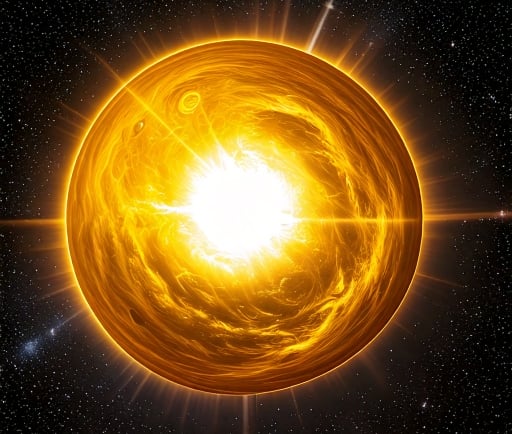F-Type Stars: Characteristics and Comparisons


Introduction to F-Type Stars
F-type stars represent a unique class of main-sequence stars that play an important role in our understanding of stellar evolution. These stars, classified as yellow-white dwarfs, exhibit distinct characteristics that set them apart from other stellar types. Surface temperatures in F-type stars typically range between 6,000 and 7,600 Kelvin, making them hotter than their neighboring G-type stars, such as our own Sun.
The Distinctive Features of F-Type Stars
F-type stars are characterized by their yellowish-white coloration, which is a result of their surface temperature and emitted light. This color is a visual representation of their energy output, making them more luminous than G-type stars but less so than A-type and B-type stars. In terms of brightness, F-type stars are often found to produce a more significant output of light and ultraviolet emissions, indicating their higher energy levels.
Comparative Analysis: F-Type vs. Other Star Types
When compared to G-type stars, F-type stars generally exhibit higher surface temperatures and luminosities. This means that while G-type stars provide the necessary warmth for planets such as Earth, F-type stars can illuminate larger planetary systems and support a different range of habitable zones. Conversely, when placed alongside A-type and B-type stars, F-type stars are cooler and less luminous, which puts them in a unique position within the stellar classification system.
Moreover, the spectral lines in F-type stars reveal essential information about their compositions and temperatures, which aids astronomers in studying not only the stars themselves but also the potential planetary systems that may orbit them. The study of stars within the F-type classification is not just an academic curiosity but also critical for our understanding of star formation, evolution, and the characteristics of exoplanets.
F-type stars contribute valuable insights into the broader narrative of the cosmos. As we delve deeper into studying these stars, we uncover more about the nature of the universe and the diverse stellar community that exists beyond our solar system.
